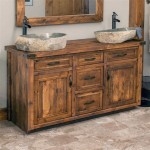Installing a Bathroom Fan Vent in Soffit: A Comprehensive Guide
Proper ventilation is crucial for maintaining a healthy and comfortable bathroom environment. A bathroom fan effectively removes moisture and odors, preventing mold growth, damage to building materials, and overall discomfort. Venting the fan exhaust correctly is equally important. While venting through the roof is a common approach, venting through the soffit offers an alternative that can be easier to implement in certain situations. This article provides a detailed guide on how to install a bathroom fan vent in the soffit, ensuring proper moisture expulsion and code compliance.
Before commencing any work, it is essential to understand local building codes and regulations pertaining to bathroom ventilation. These codes often specify requirements for duct materials, vent termination locations, and airflow rates. Failure to comply with these regulations can result in fines or the need for costly remediation. Consulting with a local building inspector or a qualified HVAC professional is highly recommended to ensure adherence to all applicable codes.
Safety should be the primary concern during any home improvement project. Prior to starting the installation, turn off the power to the bathroom fan circuit breaker at the main electrical panel. This will prevent the risk of electrocution while working with electrical wiring. Wear safety glasses to protect the eyes from debris and dust, and use work gloves to protect the hands. When working on a ladder, ensure it is properly positioned and stable to prevent falls. If working at significant heights, consider using scaffolding for enhanced stability and safety.
Key Point 1: Planning and Preparation
Effective planning is crucial for a successful soffit vent installation. This involves selecting the appropriate materials, determining the optimal vent location, and ensuring proper sizing of the ductwork. A well-planned installation will result in efficient ventilation and minimize potential problems down the line.
The first step is to select the right type of soffit vent. Soffit vents come in various shapes, sizes, and materials. Choose a vent that is specifically designed for bathroom fan exhaust. These vents typically have a backdraft damper to prevent outside air from entering the ductwork when the fan is not in operation. The vent should also be constructed from durable materials, such as aluminum or plastic, that can withstand exposure to moisture and the elements. Consider a vent with a bird screen to prevent birds and other pests from nesting inside the ductwork.
Next, determine the optimal location for the soffit vent. The vent should be positioned away from windows, doors, and air intakes to prevent exhaust air from re-entering the house. Ideally, it should be located on the side of the house that is least exposed to prevailing winds. Avoid placing the vent directly above walkways or patios, where the exhaust air could be a nuisance. Ensure that the vent is accessible for cleaning and maintenance. In many installations, the vent is positioned as close to the fan as possible to minimize ductwork length.
Calculating the required duct size is critical for efficient ventilation. The size of the ductwork depends on the airflow rate of the bathroom fan, measured in cubic feet per minute (CFM), and the length of the duct run. A longer duct run requires a larger duct diameter to minimize airflow resistance. Most bathroom fan manufacturers provide recommendations for duct sizing based on their fan's CFM rating. Consult a duct sizing chart or use an online calculator to determine the appropriate duct diameter for the specific installation. Using an undersized duct can significantly reduce the fan's performance and increase noise levels.
Gather all the necessary tools and materials before starting the installation. This includes a drill with various drill bits, a screwdriver, a measuring tape, a utility knife, a hole saw (matching the size of the vent), duct tape, aluminum foil tape, sealant, and the appropriate length of insulated ductwork. Having all the tools and materials readily available will streamline the installation process and prevent unnecessary delays.
Key Point 2: Installation Process
The installation process involves cutting the hole in the soffit, connecting the ductwork to the fan and the vent, and securing the vent in place. Careful attention to detail is essential to ensure a proper and airtight installation.
Begin by locating the center point for the vent on the soffit. Use a measuring tape and a pencil to mark the location. Use the hole saw to cut a circular hole in the soffit at the marked location. Ensure the hole is the correct diameter for the selected soffit vent. Be careful not to damage the surrounding soffit material during the cutting process. If necessary, use a pilot drill to guide the hole saw and prevent it from wandering.
Next, connect the flexible insulated ductwork to the bathroom fan. Use duct tape or aluminum foil tape to create an airtight seal between the duct and the fan's exhaust port. Ensure the duct is securely attached to the fan to prevent it from becoming dislodged. Secure the duct to the rafters or joists with duct straps or hangers to prevent sagging and maintain proper airflow. Avoid sharp bends in the ductwork, as these can restrict airflow and reduce the fan's performance. Aim for smooth, gradual curves whenever possible.
Run the ductwork from the bathroom fan to the hole in the soffit. Ensure the ductwork is properly supported and insulated to prevent condensation. Secure the duct to the soffit framing with duct straps or hangers. Connect the ductwork to the soffit vent using duct tape or aluminum foil tape. Again, ensure a secure and airtight seal. Slide the soffit vent into the hole in the soffit and secure it in place with screws or nails. Use sealant around the edges of the vent to create a watertight seal and prevent water from entering the soffit.
Inspect all connections to ensure they are airtight and secure. Check for any gaps or leaks around the vent and the ductwork. Seal any gaps with sealant or tape. The goal is to create a completely sealed system to prevent moisture from escaping into the attic or soffit.
Key Point 3: Testing and Final Steps
After the installation is complete, it is essential to test the system to ensure it is functioning properly. This involves turning on the bathroom fan and verifying that air is being exhausted through the soffit vent. Additionally, inspect the ductwork and vent for any signs of leaks or damage.
Restore power to the bathroom fan at the main electrical panel. Turn on the bathroom fan and listen for any unusual noises. Check that air is being exhausted through the soffit vent. Use a tissue or a smoke pencil to verify airflow. Hold the tissue or smoke pencil near the vent to see if it is being drawn outward. If there is no airflow, check the ductwork for obstructions or disconnections. Ensure the backdraft damper on the soffit vent is opening and closing properly.
Inspect the ductwork and the soffit vent for any signs of leaks or damage. Look for condensation on the exterior of the ductwork, which could indicate a leak. Check the soffit vent for any cracks or damage. Repair any leaks or damage immediately to prevent moisture problems. Consider applying a layer of insulation around the exterior of the ductwork to further reduce condensation.
Finally, clean up the work area and dispose of any debris properly. Ensure all tools and materials are stored safely. Double-check that the bathroom fan circuit breaker is properly labeled at the main electrical panel. Regular maintenance, such as cleaning the soffit vent and inspecting the ductwork, will help ensure the system continues to function properly for years to come.
In conclusion, installing a bathroom fan vent in the soffit can be a viable alternative to roof venting. Careful planning, proper execution, and adherence to building codes are crucial for a successful installation. By following the steps outlined in this guide, homeowners can ensure their bathroom fan effectively removes moisture and odors, contributing to a healthier and more comfortable living environment. However, it is crucial to remember that this guide provides general information, and it is always recommended to consult with qualified professionals for specific projects and to ensure compliance with local regulations.

Adding A Bathroom Fan Fine Homebuilding

Everbilt 4 In To 6 Soffit Exhaust Vent Sevhd The Home Depot

Venting A Bath Fan In Cold Climate Fine Homebuilding

Bathroom Venting Through Soffit Greenbuildingadvisor

Best Practices Bathroom Venting Greenbuildingadvisor

Choosing The Right Vent Cap For A Soffit Primexvents

Soffit Bath Fan Ventilation Exterior Inspections Internachi Forum

Soffit Exhaust Vent Installation Dundas Jafine

Home Moisture Flow Soffit Vent

Installing A Bathroom Fan Fine Homebuilding
Related Posts







